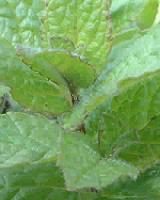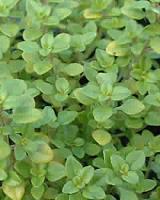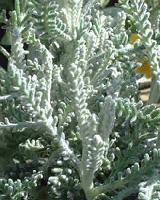Design a Herb Garden for Nutrition and Health
Just the name herb has a healing and therapeutic ring to it. Use them to improve your family’s health. Remember that the herbs that you use should never replace a qualified practitioner’s medicines. Always consult a professional if in doubt.
Herb Garden Considerations
Take a few things into consideration when you design a herb garden.

Sunshine
Herbs love sunny positions. They need full sun to develop into full flavor and fragrant specimens. Plant your herbs where they get at least 4 hours of full sun daily.
Herbaceous plants grow very leggy when they go walking along, looking for sunshine in their lives! :-) Angelica, viola’s, odorata and Corsican mint are an exception. They can grow in semi-shade.
Drainage
No plants, except water and bog plants, like wet and soggy feet. Herbs need well drained soil with plenty compost mixed into it.
Use a mulch to lock the moisture in and the weeds out! The weeds need sunlight to germinate.
Fertilization
Use a proper organic fertilizer for best results. I prefer organic because chemical fertilizers can cause an imbalance in the soil over an extended time period.
Soil
Plants only look good when they feel good. Healthy soil produces a healthy root system. A healthy root system will produce healthy foliage and a healthy plant. The bottom line; healthy plants are easier to maintain. They are also more immune to diseases.
Grouping of Plants
While you design a herb garden, group together plants that need the same amount of feeding, i.e. water, soil, etc.
Herb Characteristics
We need to establish the characteristics and growth requirements, before we design a herb garden.

Annuals
An annual is usually grown by seed and will complete its life cycle within one growth season. Plant annuals freshly every season
Perennials
A perennial is usually grown by seed or by cuttings, divisions etc. Perennials last from two to three seasons. They need to be dug out after that and new plants planted.
Shrubs
A shrub is a longer lasting plant. It grows for many years. Growth is usually anything from 1.5 meters to 2 m and more.
Trees
Trees are the longest lasting of plants. They grow tall and add the canopy. A canopy is the 5th element of design (which is most often forgotten when you design a herb garden).
Design Details
Follow the correct design principles and goals. Design
Plan and draw your design according to a suitable scale.
Hard landscaping
Complete the hard landscaping first. This could include items like a fountain or statue as focal point, a paved path for access to the herbs, flower boxes, containers, etc.
Follow the hard landscaping in your design with the soft landscaping i.e. the plants and herbs.
Visual Rhythm
As you design a herb garden use the color wheel to get visual harmony and tranquility. Color makes a garden very interesting.
Start off with softer colors, then go to brighter colors, then repeat. Note that your second color does not upstage the first color. The colors must blend.
Here is an effective example that works well. Start off with one mint variety, and then bring in different kinds of mint, e.g. peppermint and spearmint. Repeat the pattern for an excellent effect.
Useful Herbs
Golden Creeping Oreganum is a lovely creeping ground cover. Plant it around paving.
Thyme is another good ground cover. It can be used to cascade down a rockery or around paving. It can grow in fairly poor well drained soil. Thyme is a slow grower, so don’t expect miracle overnight! It is used as a mouthwash and antiseptic.
Tansy is a bit of a scruffy herb. It has yellow daisy flowers. Tansy is an excellent fruit fly repellent. It makes a good companion plant under fruit trees.
Rue is also an insect repellent. It gives off a toxic residue. Rue is excellent to plant near stables.
Thyme, cotton, lavender and rosemary have fine texture leaves. Geraniums, pelargoniums, comfry and angelica have large texture leaves. Use combinations of these for visual effect when you design a herb garden.
Although not a herb, strawberries make a wonderful and useful contribution to a herb garden design. It serves as a ground cover, and has delicious fruit.
Herbs for Color

Grey
Grey herbs are Wormwood (insect repellent), cotton lavender (fish moth repellent), Cleveland sage, mugwort.
Pink
Pink herbs include; perennial basil, wooly sage, wild rose geraniums (the wild ones are pinks and purples), roses (wild garlic does well under roses as an insect repellent), bergamot, bressingham thyme.
Yellow
Yellow herbs include; golden celery, golden creeping oreganum, tansy, rue, Jerusalem Artichoke, and golden feverdew.
White
Herbs in this category are, elderberry, angelica, chervil, yarrow, garlic chives, chamomile, white thyme, and pyrethrum (insect repellent).
Red
Herbs with red flowers include roses, bergamot, nasturtiums, poppies and pineapple sage.
Green
Thymes and mints provide striking green foliage.
There are very many herb varieties. Each herb is unique. Each one has been created for a purpose. There are many useful herbs that I have not mentioned, like parsley. It is rich in iron. A sprig of parsley everyday contributes to a healthy body.
The list just goes on and on. There is thus lots of scope for you to be creative when you design a herb garden.
Free Herb Garden Design
We designed and installed this herb garden design. We provide all the information and guidance you need to adapt this garden plan. Download and use this
herb garden design plan
for your garden. Here is a
full description
of all the herbs used in this garden design.
How about designing a Container Herb Garden?
Return from Design a Herb Garden to Design Gardens Home Page
Attention: This is limited to the next 7 lucky individuals
“The FREE Shed Plan and Garden Improvement Project ”







